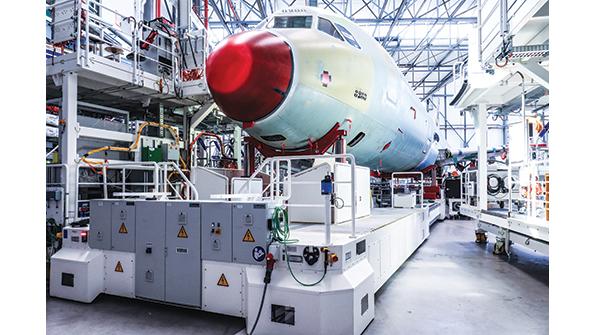
Since the COVID-19 pandemic waylaid commercial aviation in March, there has been much talk about when aircraft production volumes will return to “normal.” Across the industry, leading CEOs have defined “normal” as 2019. But a closer look at earlier market forecasts and planned production rates shows that 2019 is the wrong benchmark.
Although conventional wisdom last year was that Airbus and Boeing would raise output ever higher, the two aircraft manufacturers already were producing more airplanes than the market could absorb and were planning to build significantly more in the future. Let’s do the math.
In 2019, Airbus projected demand for 39,000 aircraft of 100 seats or more over the next 20 years—an average of 1,970 annually and a figure roughly in line with Boeing’s forecast. If the two companies split the market 50-50, each would have demand for 985 aircraft a year. But that number already is too high because it does not take into account sales by Brazil’s Embraer, China’s Comac or Russia’s United Aircraft Corp. It is also possible that another company, perhaps a market disruptor, could build the first hybrid-electric 100-seater in the next couple of decades.
Airbus delivered 863 aircraft in 2019, reasonably close to its allocation of the forecast 20-year average; Boeing planned to build and hand over about 860 jets last year, for a combined total of approximately 1,840 aircraft. Boeing ultimately delivered just 380 units because of the 737 MAX grounding, but the point is that both companies were planning to build nearly as many aircraft as their average forecast for the next 20 years. In other words, even before the biggest downturn in aviation history, no room for any production growth existed. Take the other aircraft manufacturers into account, and you could surmise there already was significant overproduction, particularly in the narrowbody segment.
Of course, the fallout from the novel coronavirus pandemic has made all these studies and production plans irrelevant. But industry needs to realize its pre-COVID-19 plans were already unrealistic. One way or another, it had to go wrong, maybe not as dramatically as it turned out, but there was no way the dreams could have become reality.
To no one’s surprise, the signs of overproduction have been visible during the crisis. Airbus cut output by only one-third, aiming to keep as high a level as possible. Boeing wants to hand over the undelivered stored MAXs and ramp up production of new ones at the same time. Essentially, airlines may be forced to accept aircraft they clearly do not want and cannot afford. Airbus is already producing a significant number of white tails, something it had promised to avoid.
Keeping production high now is short-sighted. It weakens airline customers further during a time of huge financial pressure. It is also bad for future pricing once airlines are ready to take more aircraft. There will be ample capacity from lessors or cheap, almost brand-new aircraft that operators want to dispose of.
Arguably, steep cuts in production could ruin the supply chain. But the bitter truth is that although some parts of the supply chain were struggling to keep up with the tempo before the crisis, there is now far too much capacity. And clearly, an excess of capacity will continue for years.
Management understandably wants to minimize the damage and needs time to digest the avalanche of bad news over the past few months. The financial and market pressures are also obvious: the fewer deliveries, the less revenue and the smaller the market share. Boeing, already badly damaged by the MAX production interruption and that aircraft’s disappointing reception by customers, has every incentive to contain any further loss of market share.
Nonetheless, more tough decisions loom. On the Boeing side, a slower reintroduction of the MAX is inevitable, as is a very slow service-entry process for the 777X. Airbus will have to cut narrowbody output further. If long-haul travel does not return quickly—and no indications suggest it will—Airbus will also have to take another hard look at A350 and A330neo rates, as painful as that may be.
Remembering that earlier plans were unrealistic will be particularly important once demand recovers. A more measured approach is needed this time despite competitive incentives to do the opposite.





Comments
First, Comac has no certified aircraft (and they are fighting with UAL on the 929). The only aircraft built will be forced on the Chinese carriers by the government.
Russian has proved it cannot support the Super Jet, why would anyone take a MC21 that has no support? Yes they can certify it, but other than a few give aways no one wants an aircraft that big that is unreliable after market support (let alone sanctions) .
As for disputer, lets be real here. These are not C-150s. No electrical technology in the world is going to replace a liquid fuel LCA.
No startup is going to be able to do a 10 billion dollar TBA aircraft, created the support network and get it to sell before A and B jump in.
Space X was a very unique situation.